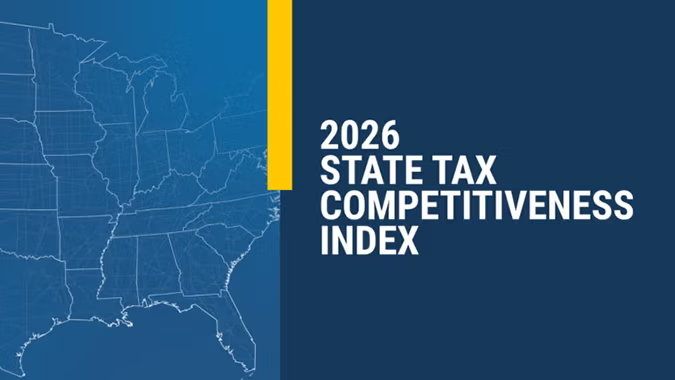It’s the story that New Jersey business reporters are avoiding, yet it could have a major impact on New Jersey’s employers, economy and way of life. Flood hazard regulations to be formally proposed by the state Department of Environmental Protection will put nearly half of the state in a regulatory flood zone.
But the nation’s foremost consultant on climate risk said the state is inappropriately basing its adaptability plans on a single report using extreme outlier projections.
“Really all New Jersey residents and businesses should be very concerned with the DEP’s approach to these rules,” said NJBIA Vice President of Government Affairs Ray Cantor. “You’re looking at buildings in impacted areas needing to be elevated an additional 5 feet. Our barrier islands, bay communities, and urban areas such as Hoboken, Newark, Jersey City and Atlantic City may become undevelopable. Redevelopment will be made more difficult, if not impossible.
“We’re not saying climate change or sea level rise isn’t real. But what we are also saying is climate adaptation approaches should be comprehensive and based on projections that are in line with current data and consensus climate science – not the extreme outlier projection of a single data point that the DEP has selected as its basis for what will result in draconian policies for the state.”
Specifically, the DEP has selected a single chart prediction from a 2019 report that assumes an extreme sea level rise of 5.1 feet by the year 2100 to determine its upcoming Protecting Against Climate Threats (PACT) land use regulatory changes.
CFAN REPORT
The Climate Forecast Applications Network (CFAN), however, released a report this week that the sea level projections in the Rutgers study are substantially higher – nearly double – that those provided by the Intergovernmental Panel on Climate Change (IPCC) – which is the intergovernmental body of the United Nations.
The CFAN report, which can be found here, was commissioned by NJBIA and the Commerce and Industry Association of New Jersey (CIANJ). It recommends revisions to account for the latest IPCC assessment reports.
“Reliance on an outlier perspective on sea level rise scenario outcomes from a single research group does not provide a sound basis for adaptation decision making,” CFAN President Judith Curry wrote in the report.
“It is recommended that the Rutgers Report be revised to account for the new IPCC assessment reports and improvements in our understanding on how to best manage adaptation to sea level rise under conditions of deep uncertainty.”
Curry also said that while the projections in the Rutgers report are characterized as “consensus science” by the authors of the report, they do not reflect a consensus of international experts on climate change and global sea level rise.
“The consensus on climate change and sea level rise are better represented by the IPCC assessment reports,” she wrote.
According to the CFAN report, the Rutgers study used by DEP inappropriately uses improbable emission scenarios that the IPCC and most climate academics reject as unrealistic. Greater detail about those emission scenarios can be found on page 11 of the CFAN report.
BUSINESS GROUP RECOMMENDATIONS
To this point, DEP has included the business community and other stakeholders of its PACT rules plans. It is expected that the state DEP will formally propose rules this spring.
With the CFAN report completed, NJBIA and CIANJ are making the following recommendations to DEP:
- That DEP not propose its PACT rules based on one single report with outlier projections.
- That DEP work with Rutgers and other scientists to provide updated sea level projections consistent with IPCC findings, methodologies and the latest science. IPCC, in fact, is expected to publish new climate and sea level rise assessments this year.
- That DEP adopt a resiliency plan before proposing draconian land use regulations.
- That the resiliency plan be released first as a draft, followed by hearings and opportunities for stakeholder input before publishing a final document.
- That DEP initially set no more than a 2-foot sea-level rise projection for regulatory purposes, to allow sufficient protection commensurate with what is more widely accepted, and that DEP revisit requirements as further knowledge is developed.
- That DEP work with the Legislature, and provide resources for resiliency planning and projects, including both hard structures and managed retreat if appropriate.
“When you’re talking about such impactful decisions on New Jersey’s economy, they should definitely be made with the input of our policymakers,” Cantor said.
“This goes beyond business impacts, too. Ideally, you’re now going to have homes in flood zones that weren’t previously in flood zones before. This will drive up insurance costs and the costs for construction and reconstruction. Imagine trying to sell your home with an addendum to your deed saying your home will soon be underwater – because of one outlier report.”
DEP RESPONSE
The DEP said it was analyzing the CFAN report and was not prepared to comment on it in an NJ101.5 news report this week.
“With flooding apparent statewide, sea levels continuing to rise, and extreme weather becoming commonplace, NJPACT would ensure the resilience of New Jersey’s communities and economy,” the DEP said in a statement to reporter David Matthau.
Cantor said it was important to note that NJBIA’s recommendations do include 2-foot sea-level rise projections – but also the need for a resiliency plan.
“Part of New Jersey’s flooding issues have a lot to do with subsidence, meaning our land is sinking,” Cantor said. “So, resiliency is going to be a key part of the equation for New Jersey. We need to ensure our coastal adaptation decisions are comprehensive and based on IPCC assessments, which are recognized as the gold standard in climate change analyses.”



